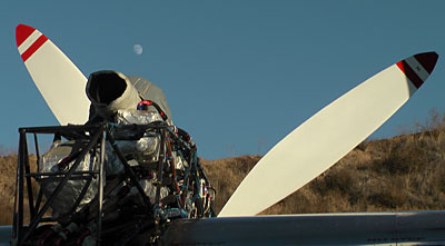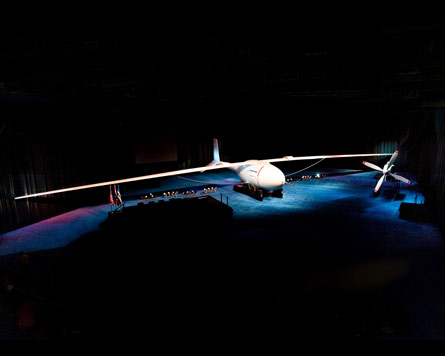The propulsion system for Boeing’s high-altitude, long-endurance Phantom Eye unmanned air vehicle is undergoing a series of ground tests in Santa Clarita, California, before heading into flight tests later this year.
Engineers have established start procedures for the hydrogen-powered engine and are now testing engine speed and propeller control in flight conditions. Previous tests were done in an altitude chamber, but the new work is the first time that the flight hardware has come together, Boeing says.
As testing continues the 4.8m (16ft) diameter propellers will meet the 2.3-litre, four-cylinder engines that will each provide 150hp. Propulsion for the ground test is provided by a modified Ford truck engine, but at high altitude, a three-stage turbo charger will kick in, Boeing says.
 |
|---|
© Boeing |
 |
|---|
© Boeing |
The twin-engine Phantom Eye, with its 45.7m (150ft) wingspan, is designed to fly at 65,000ft for up to four days at a time. It will cruise at approximately 150kt (277km/h) and can carry payloads weighing up to 204kg (450lb).
The air vehicle itself is also undergoing testing at Boeing’s St Louis facility in Missouri. The two systems will meet this spring at Edwards AFB in California to begin the flight test programme.
Boeing unveiled its hydrogen-powered demonstrator UAV in St Louis last July.
Source: Flight International


























